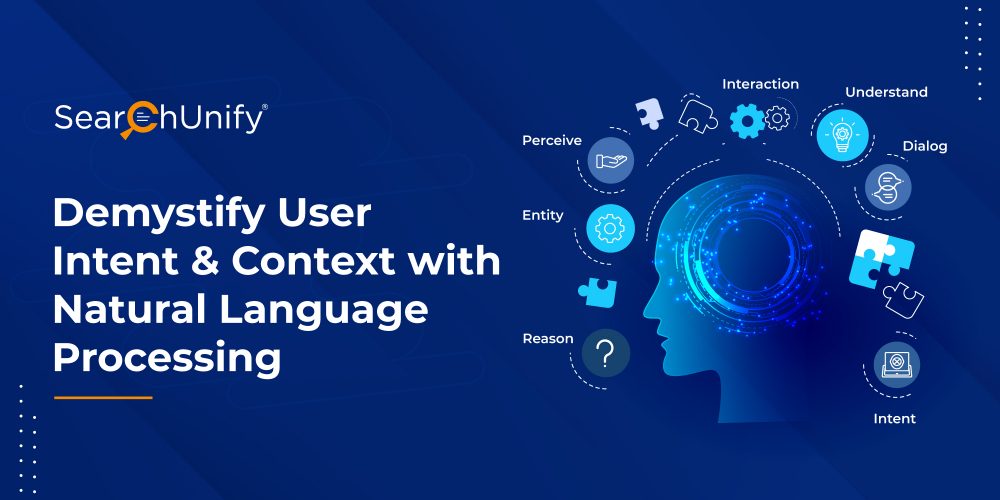
An exceptional customer experience (CX) is not just a nice-to-have feature; it’s the cornerstone of business success. A staggering 80% of organizations anticipate competing primarily based on CX.
So, to stay ahead and deliver remarkable customer experiences, businesses are leveraging technologies such as Natural Language Processing (NLP) to understand customers’ intent and improve user interactions. This shift is leading them to abandon traditional chatbots and embrace virtual assistants.
NLP empowers chatbots to mirror human conversations by decoding user queries’ context, providing first-case resolutions, and elevating CX.
Eager to learn about how NLP enhances technology’s understanding of human language to redefine customer support? This blog post explains everything you need to know.
Let’s get started.
Unveiling Context with NLP
What would be your answer if we asked you to choose one chatbot for your customer support?

The second one, right?
Understanding the context and intent of user queries is crucial to providing accurate and relevant solutions to customers. However, understanding user intent can be challenging.
Like in the picture, traditional chatbots use a keyword-based approach and fail to grasp the nuances of human language.
Conversely, AI-powered chatbots leverage NLP, capturing contextual intent by capturing 360-degree customer journeys. These include the user’s previous interactions, search history, and more.
NLP identifies patterns, accurately decodes the intent of user queries, and leads to more relevant, contextually accurate, and personalized search results.
The Building Blocks of NLP: Understanding its Core Components
NLP is a multidisciplinary process that combines machine learning and natural language generation (NLG) to make human-to-machine interactions possible. Let’s find out how:
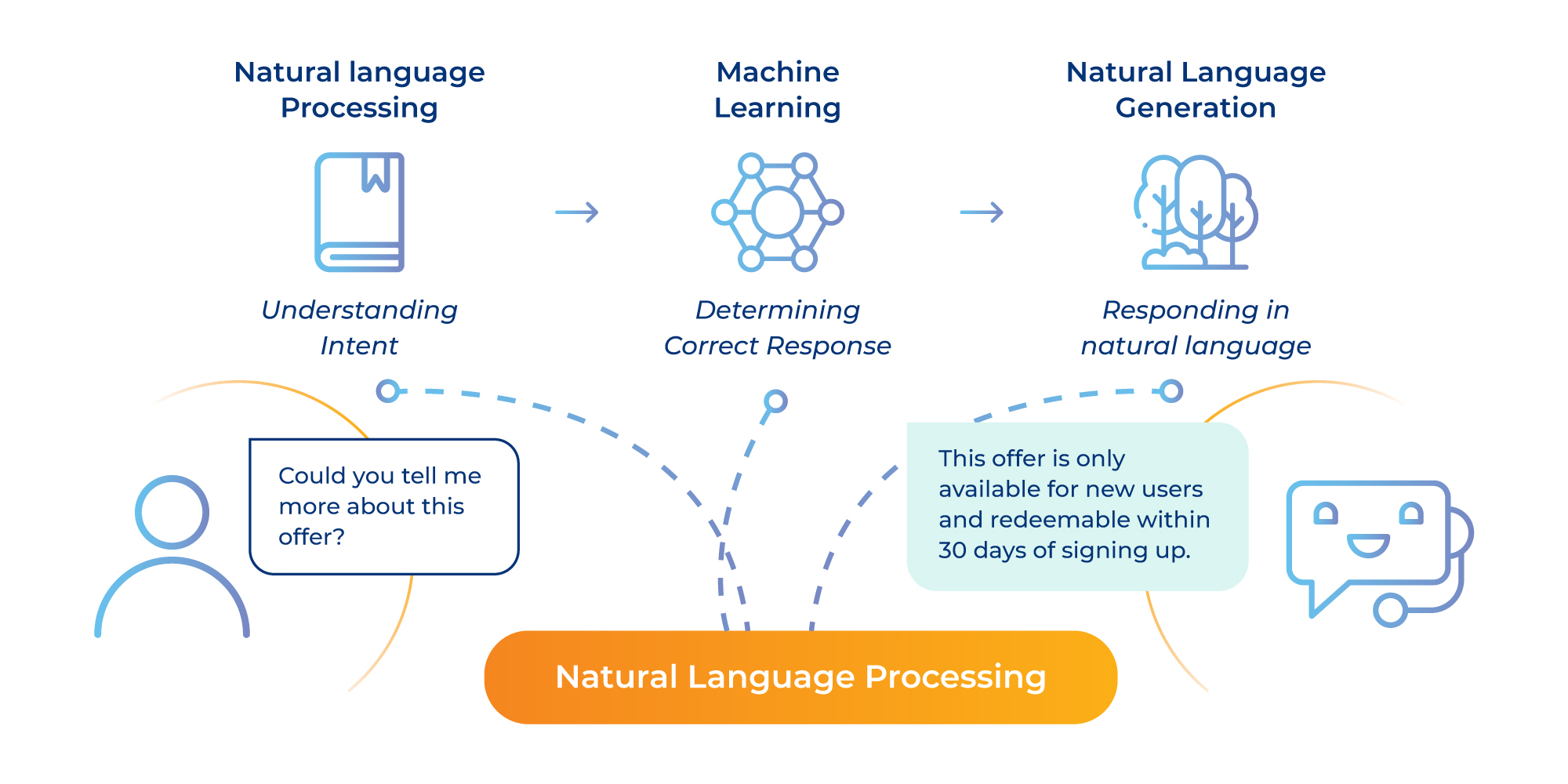
NLU To Understand User’s Search Intent
Search intent means what a user is trying to find by running a search query – it could be to find, learn, or purchase something. Natural Language Understanding (NLU) interprets the meaning behind the words used in queries.
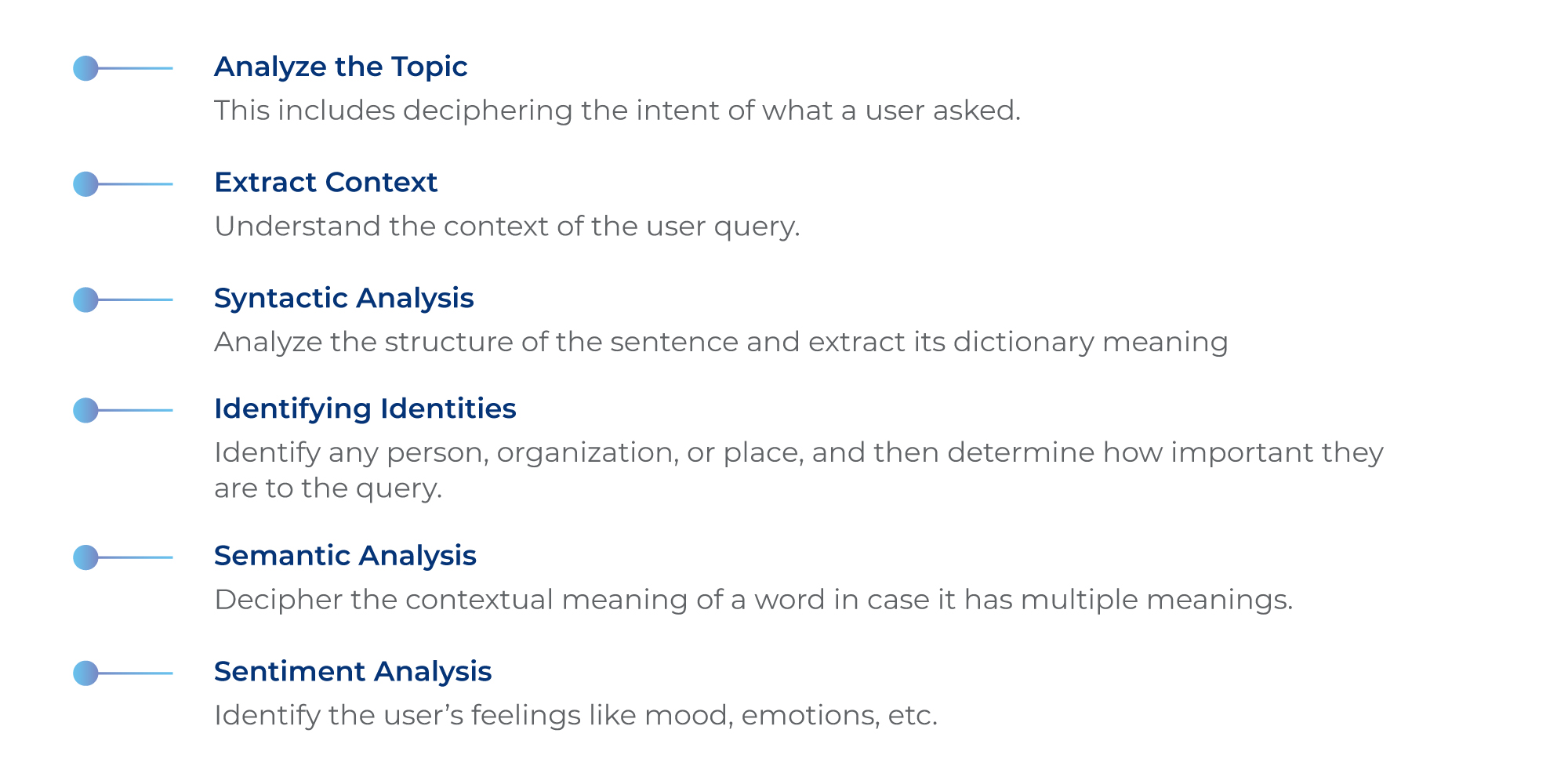
To achieve this, it leverages translation, text summarization, speech recognition, topic segmentation, named entity recognition, semantic analysis, etc.
ML To Determine The Answer
Machine Learning is another subset of AI that learns from its own experience and makes smarter decisions over time. It converts complex human text into structured machine data.

When you pair that data with the user’s intent, determining and framing a fitting response becomes much easier.
Using NLG To Generate The Response
Now, it’s time to translate machine language back into meaningful words or phrases that users can understand. The NLG systems act as routers to mirror human-like conversations and convey information in clear, consumable language, thus making the interactions more relevant and natural.
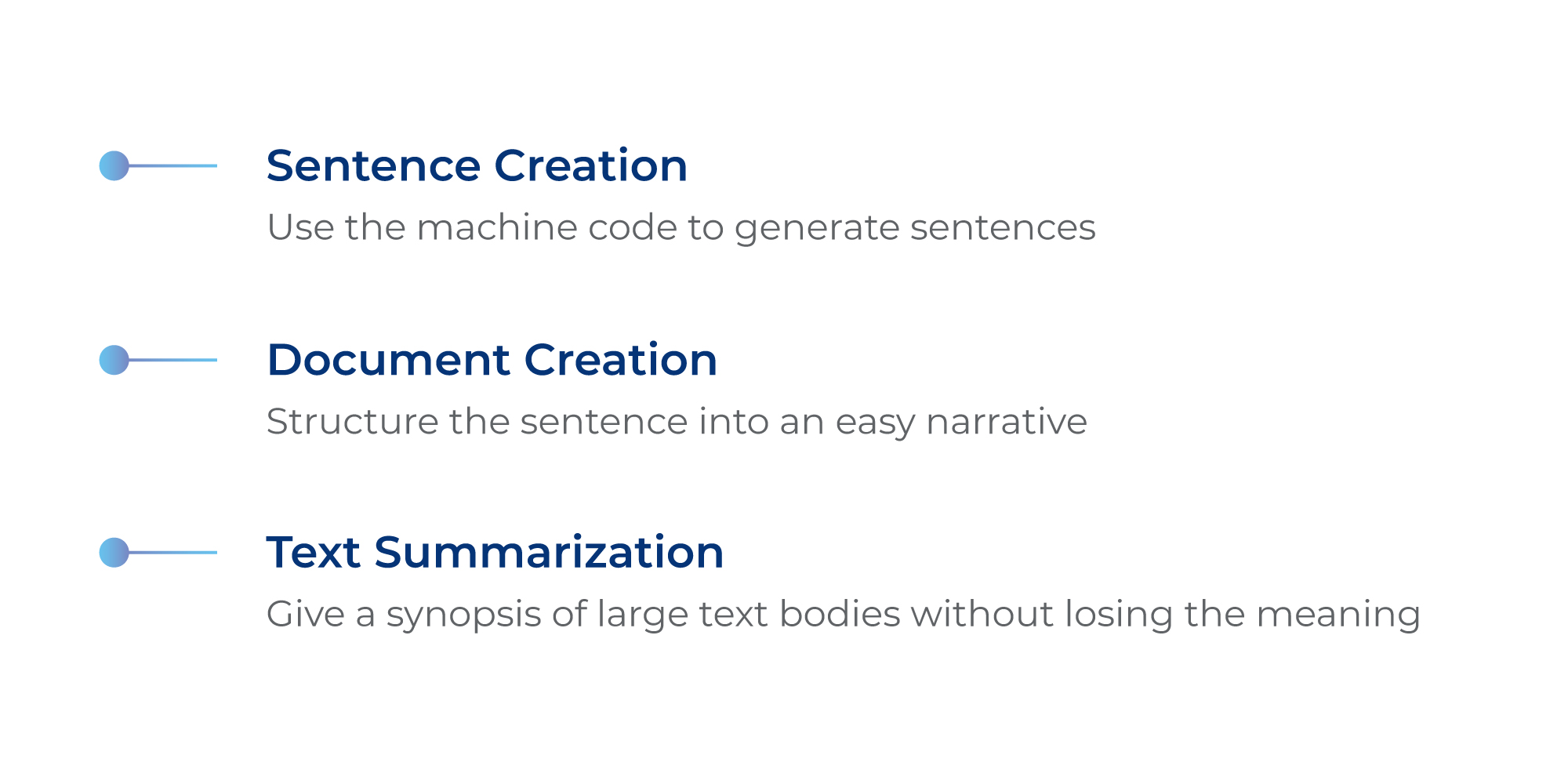
Essential NLP Techniques for Understanding Intent and Context
Imagine an employee wishing to know if the company she works for is declaring a holiday for 2nd April. So, she types a search query- ‘Are we getting off on Friday?’ Now, it’s easy for a human to comprehend this question, but it’s a tedious task for a machine.
NLP engines have the ability to recognize varying words in addition to distinguishing between syntactic and semantic rules. After which, they deliver relevant results.
Here’s how:
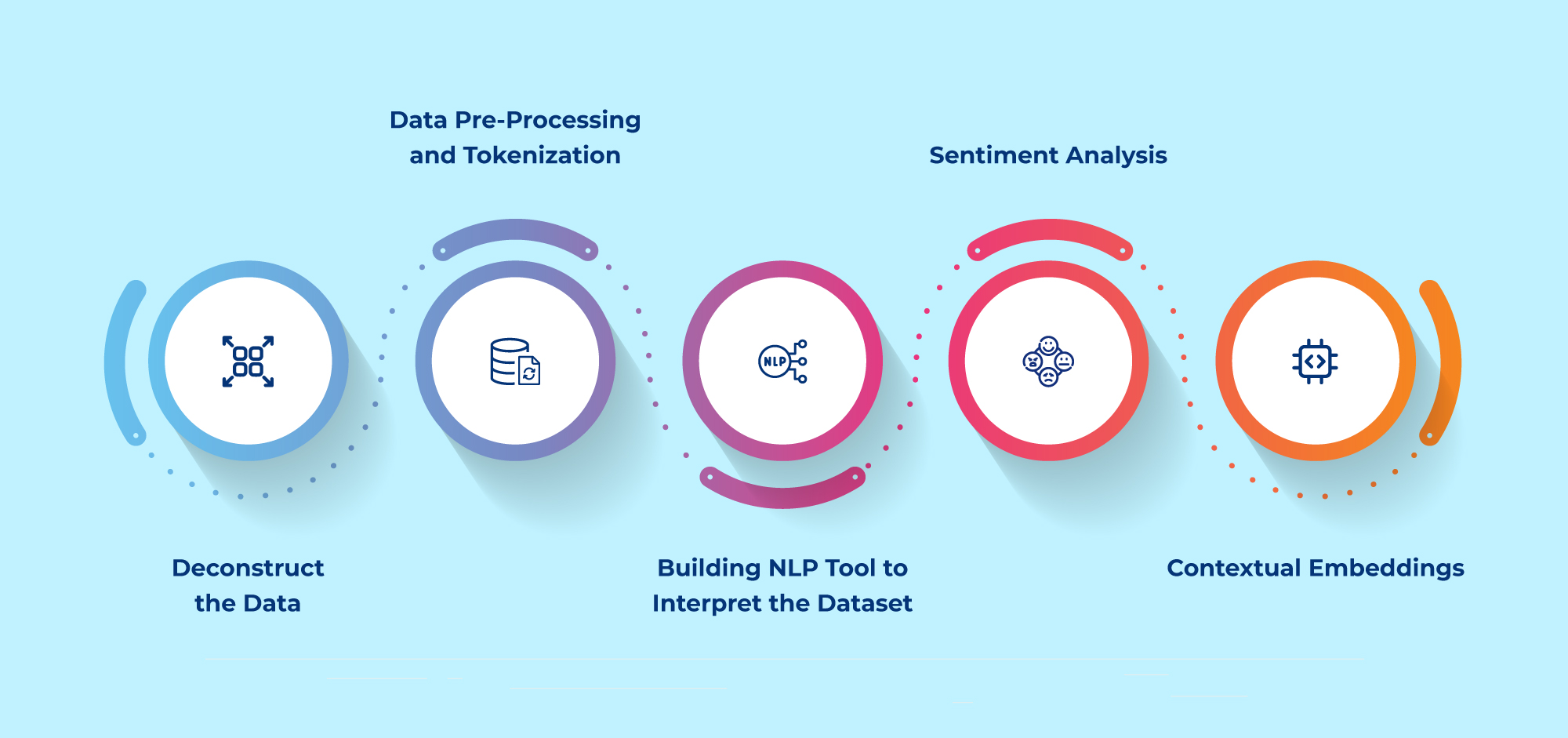
Deconstruct the Data
NLP-powered chatbots or search engines not only extract the intent from the content but also decrypt the syntax and semantics. Further, they use this information to infer the entity’s characteristics. The synthesized data is indexed with semantic tags to ensure better accessibility and searchability.
Citing the above example, NLP must first recognize that the ‘we’ here refers to the firm’s employees. Thereafter, it should parse ‘get off’ in its actual context, meaning ‘getting a day off from work’ instead of ‘getting off the train.’
Data Pre-Processing and Tokenization
NLP systems use syntax and semantic analysis to understand how words are contextually related.
They also identify the grammatical structure of content with techniques like tokenization. This technique involves breaking down the text into smaller semantic units to make it more organized. These smaller units or tokens could be individual words, phrases, or even punctuations.
After this, NLP analyzes its structure to drive meaning, leading to a deeper understanding of user queries.
Building NLP Tool to Interpret the Dataset
The dataset is now ready. Next, it’s time to build an NLP tool algorithm and edit it to interpret natural language. Developers can choose between two main algorithms: Rule-Based Approaches and Machine Learning Algorithms.
In the Rule-Based Approach, linguists create ground grammatical rules, and the NLP system uses these rules to interpret natural language data. Conversely, machine learning algorithms allow NLP systems to learn from data and experience. And they get better at understanding human language over time.
The common machine learning algorithms that NLP systems use are deep learning models (recurrent neural networks (RNNs)) and transformer models ( Bidirectional Encoder Representations from Transformers (BERT)).
Sentiment Analysis
Sentiment analysis is a crucial component of NLP, which analyzes the emotions behind user queries. It identifies whether query sentiment is positive, negative, or neutral, deduces the user’s mood, and personalizes the response. This capability provides a better understanding of sentiments, enhancing engagement and user experience.
Contextual Embeddings
Contextual embeddings, which are used in BERT models, understand that one word can have different meanings based on its context. Conventional word embeddings assign static vectors to individual words. However contextual embeddings consider semantic words to create a more nuanced understanding, leading to more accurate interpretations of user queries.
Real-World Applications of NLP in Understanding User Intent and Context
Enterprise Search
Enterprise search leverages NLP to comprehend users’ search query intent, even for complex ones, delivering personalized and contextually accurate results.
Virtual Assistants
Users get frustrated with robotic conversations. But no worries! Conversations with GenAI-powered virtual assistants feel natural and engaging.
Thanks to NLP!
GenAI-powered virtual assistants harness NLP to understand the context and intent of the queries. Additionally, the temperature setting a configurable parameter adjusts the level of creativity in the GenAI VA’s responses. These virtual assistants handle various customer queries, from simple to complex, while maintaining a contextual understanding of the conversation.

Content Recommendations
Imagine an employee searching for “powerful sales strategies” using an AI-powered enterprise search. Enterprise search uses NLP algorithms to understand the user’s query intent. After that, it searches the knowledge graph to find the most relevant article.
Sounds impressive, right? But hold on!
It also gives personalized content recommendations that resonate with users’ interests through a handy embedded widget, boosting engagement and keeping users on the site.

Other Support Products
In customer support, agents require AI-powered products that leverage NLP to analyze the sentiment behind a user’s query and identify their mood.
After that, intelligent swarming categorizes these incoming queries and assigns them to the best suitable agent, who is expected to resolve the case on their own and put an end to escalation.

Takeaway
Language is inherently ambiguous, and in the machine world where the interactions are already limited, it becomes more challenging to decipher the intent. This is where NLP comes into play.
If you’re looking to leverage NLP for customer service, this ebook is for you.
Additionally, if you’re interested in diving deep into how NLP fuels a virtual assistant, request a demo and see the SUVA live in action today!




















